Jacobus Ferdinandus Saey or Jacob Ferdinand Saeys (1658 - after 1726) was a Flemish painter who specialized in architectural paintings depicting gallant companies amidst imaginary Renaissance and Baroque palaces and buildings. After starting his career in Flanders, he moved to Vienna, where he stayed for the rest of his life.
Home » Tutti i post

Salvador Dali and the Science
Dalí was a versatile artist. Some of his more popular works are sculptures and other objects, and he is also noted for his contributions to theater, fashion, and photography, among other areas.
Dalí's life-long interest in science and mathematics was often reflected in his work. His soft watches have been interpreted as references to Einstein's theory of the relativity of time and space.
Images of atomic particles appeared in his work soon after the atomic bombing of Hiroshima and Nagasaki and strands of D.N.A. appeared from the mid-1950s.
In 1958 he wrote in his Anti-Matter Manifesto: "In the Surrealist period, I wanted to create the iconography of the interior world and the world of the marvelous, of my father Freud. Today, the exterior world and that of physics have transcended the one of psychology. My father today is Dr. Heisenberg".
The Disintegration of the Persistence of Memory (1954) harks back to The Persistence of Memory (1931) and in portraying that painting in fragmentation and disintegration has been interpreted as a reference to Heisenberg's quantum mechanics.

Matthias Grünewald | Renaissance painter
Matthias Grünewald (1475-1528) whose real name was Mathis Gothart, called Nithart or Neithardt, was a major figure in a generation of great northern german Renaissance painters that also included Albrecht Dürer, Lucas Cranach and Albrecht Altdorfer.
Grünewald remained relatively unknown until the 20th century; only about 13 of his paintings and some drawings survive.
His present worldwide reputation, however, is based chiefly on his greatest masterpiece, the Isenheim Altarpiece c.1513-15, which was long believed to have been painted by Dürer.

Rafael Espitia, 1967 | Surrealist painter
Born in Cartagena, a port city on Colombia’s Caribbean coast, the artist began his career at an early age during the late 60’s and 70’s.
At age 17 he was already studying at the Art Students League of New York.
Additionally, he studied art and history of arts in Bogotá and Madrid, receiving many awards and recognition.
Rafael Espitia is a renowned Columbian contemporary artist who has spent last thirty years honing his unique style of colorful surrealism.
His art ranges from cartoonish pop-art and black and white images of celebrities to bikini models painted in some mythical, cosmic atmospheres.

Karin Broos, 1950 | Photorealism Figurative painter
Swedish artist Karin Broos trained at the Royal Academy St. Joost in S’Hertogenbosch in the Netherlands, but has lived and worked as an artist in Värmland since 1975.
Karin Broos painting is formulated placid and with no excess. Rust red water, curls around, rests inaudibly reflective, pours slowly over a floating female body, inviting, releasing, unsafe.
There is a psychological intesity in Broos paintings, a state that grips and never letting go.

Joseph Capicotto | Abstract painter
Joseph Capicotto is a Canadian self-taught artist. His artistic abilities were evident at a young age. He is well known for his wide variety of subject matter and his proficiency in various painting techniques.
Joe's wealth of experience in light, colour, form and dimension is seen in the natural transition he brings to the canvas. His pieces resonate with carefree passion. His figurative paintings embrace the elegant features of the human figure with a romantic flowing style. Many of his pieces express a sense of reality and dream at the same time. They evoke feelings of mystery, passion and intrigue.
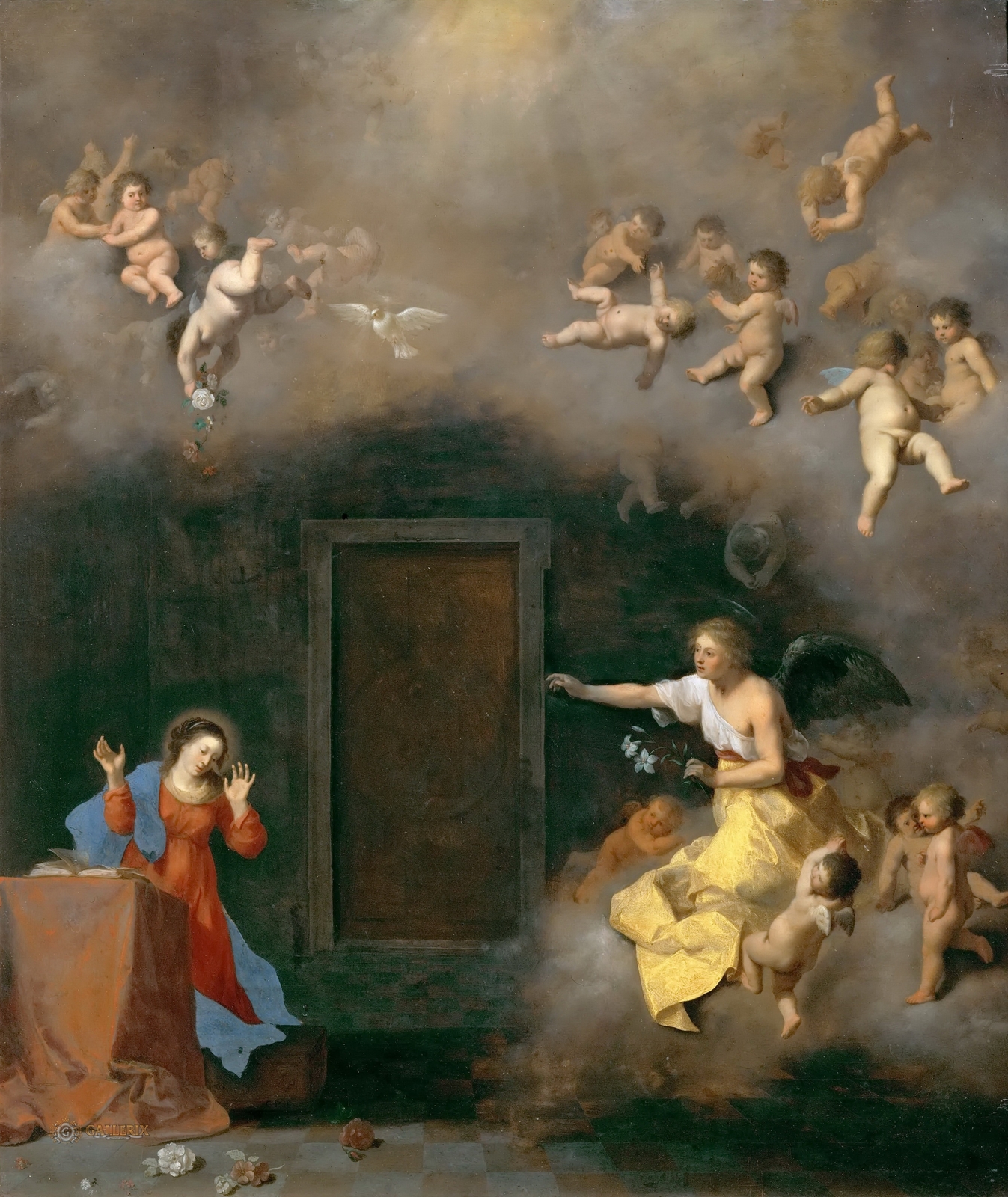
Cornelis Van Poelenburgh | Dutch Golden Age Landscape painter
A Dutch painter, well know for his landscape work, Cornelis van Poelenburgh (1586-1667) is mentioned as an artist who aspired towards styles of the masters, though this was praise, and not a belittling of his work. It is said that he strived to capture human figures as Raphael (1483-1520) the Italian master did and to paint landscapes as the Baroque master, Claude Lorrain did (1600-1688). These unique aspirations were also enhanced by an influence from the German born, Italian styled, innovator of landscapes, Adam Elsheimer (1578-1610).

Hoàng Nam | Professional photographer
Photographs of a young Vietnamese photographer who’s artistic nickname is Hoangnamphoto are rather pleasurable.
He adores nature, landscapes and his Vietnam.
Thanks to his photos, we get to know this far away country, and the way that people live in it, but also we get to enjoy in the perfectly captured artistic side of it.

Paolo Fiammingo | Mannerist painter
Pauwels Franck known in Italy as Paolo Fiammingo and Paolo dei Franceschi (c. 1540 - 1596), was a Flemish painter, mainly of landscapes with mythological and religious scenes, who was active in Venice for most of his life.
He was likely born c. 1540 but his birthplace is not known. He became a member of the Antwerp Guild of Saint Luke in 1561. He is recorded in Venice from 1573 but was likely an assistant in Tintoretto’s workshop there already in the 1560s. He worked in Venice for the rest of his career. He opened a successful studio in Venice, which received commissions from all over Europe.

Gennaro Greco | Imaginary Architecture /Landscape painter
Gennaro Greco (1663-1714) also known as "Il Mascacotta", was an Italian painter of Figures, portraits, landscapes, landscapes with figures, architectural views, murals and veduta. Greco was a specialist in imaginary views (vedute ideate) showing architectural ruins.
Greco was born and worked in Naples.
He is described by Dalbono as a painter of views of mutilated ruins.
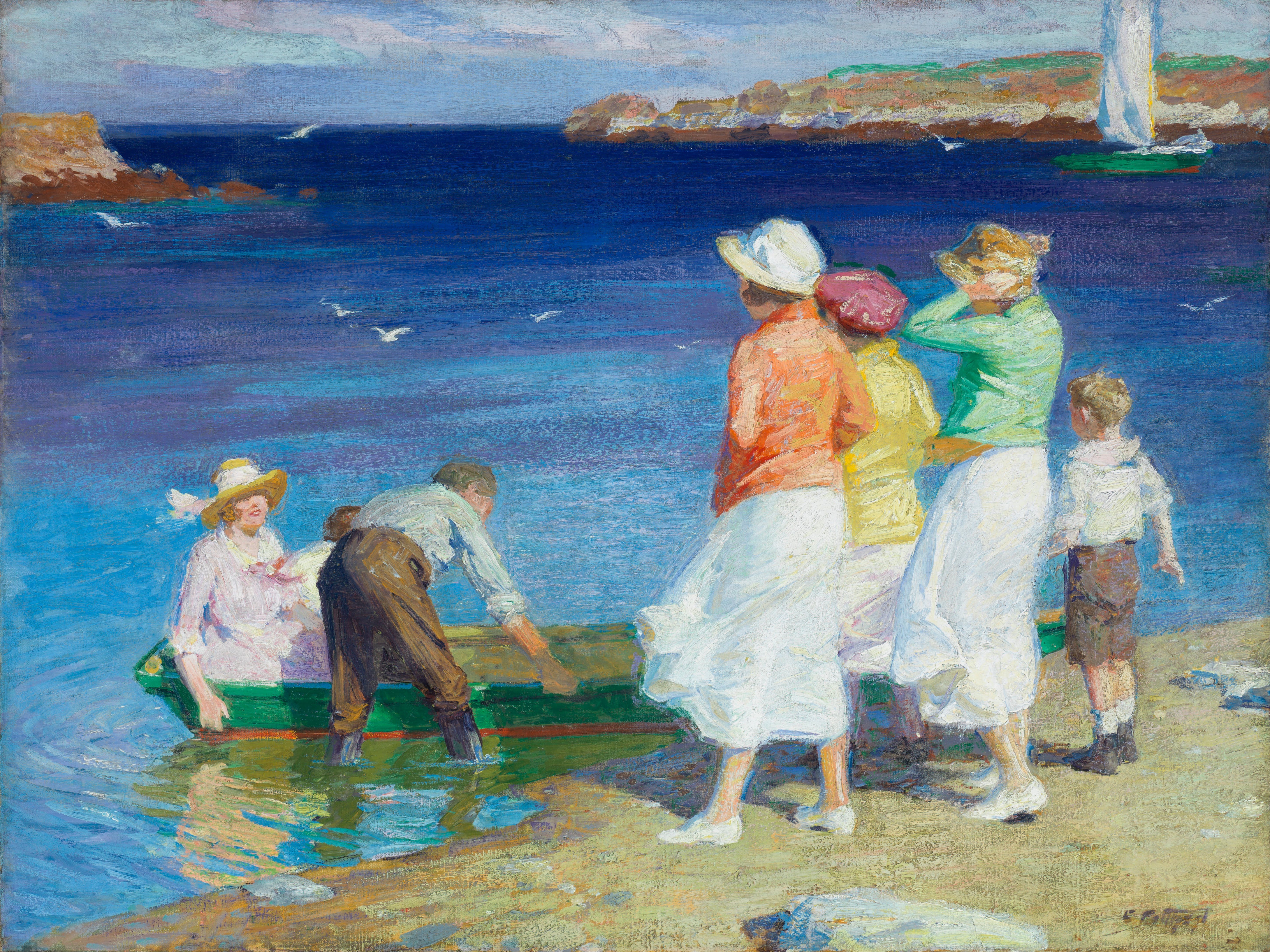
Edward Henry Potthast | Impressionist painter
Edward Henry Potthast (1857-1927) was an American Impressionist painter. He is known for his paintings of people at leisure in Central Park, and on the beaches of New York and New England.
Edward Henry Potthast was born on June 10, 1857 in Cincinnati, Ohio to Henry Ignatz Potthast and Bernadine Scheiffers.
Starting in 1870 he studied art at the McMicken School in Cincinnati and in 1873 he started working at the Strobridge Lithography Company.
From June 10, 1879 to March 9, 1881, Potthast studied under Thomas Satterwhite Noble, a retired Confederate Army captain who had studied with Thomas Couture in Paris.

Dirck van Delen | Architecture Fantasy painter
Dirck van Delen or Dirck Christiaensz van Delen (c.1605, Heusden - May 16, 1671, Arnemuiden) was a Dutch Golden Age painter who specialized in architectural painting.
According to the early artist biographer Arnold Houbraken, van Delen was born in Heusden. It is not clear with whom he apprenticed and both Frans Hals and Hendrick Aerts (who also specialized in architectural paintings) have been proposed as his masters. More plausible are studies under Pieter van Bronckhorst and/or Bartholomeus van Bassen in Delft.

Franz Christoph Janneck | Baroque Era style
The celebrated Austrian painter Franz Christoph Janneck (Graz 1703 - Vienna 1761) was born in Graz, where he initially trained under Matthias Vangus. In the 1730s, Janneck moved to Vienna, but would spend most of the decade traveling throughout Austria and southern Germany, returning to the Austrian capital in 1740. There, he enrolled at the Viennese Academy, and eventually held the post of Assessor from 1752-1758, supervising the administration of the Academy alongside his fellow artists Paul Troger (1698-1762) and Michelangelo Unterberger (1695-1758).

Eleanor Fortescue-Brickdale | Pre-Raphaelite painter
Eleanor Fortescue Brickdale (1871-1945) was a well respected illustrator and painter of her day. In 1896, she created a lunette titled Spring, which was used in the Royal Academy Dining Room. In 1902, she had the honor of becoming the first female member of the Institute of Painters in Oils. She illustrated many books such as Poems by Tennyson, 1905, W.M. Canton, Story of St. Elizabeth of Hungary, 1912, and Calthorp, A Diary of an 18th Century Garden, 1926, to name a few. In 1919, Eleanor Fortescue Brickdale's Golden Book of Famous Women was published by Hodder and Stoughton, which was a compilation of stories about some of the most famous women in history and legend as written by some of the most famous authors in history such as William Shakespeare, Lord Tennyson, Charles Dickens, Edgar Allan Poe and John Keats among others.
Although this book contains no introduction to explain whose inspiration it was to put the book together or who chose the content, it seems clear from the title that Brickdale must have been the mastermind behind it.

Kuzma Petrov-Vodkin | Symbolist painter
Kuzma Sergeyevich Petrov-Vodkin / Кузьма Сергеевич Петров-Водкин (born October 24 [November 5, New Style], 1878, Khvalynsk, Saratov oblast, Russian Empire - died February 15, 1939, Leningrad, Russia, U.S.S.R. [now St. Petersburg, Russia]), Russian painter who combined many traditions of world art in his work and created an original language in painting that was both deeply individual and national in spirit.
Petrov-Vodkin’s birthplace was a small town on the banks of the Volga River, where he was born into the family of an impoverished cobbler.
He spent his youth there, living in harsh conditions reminiscent of those described by Maksim Gorky in My Universities.
But his talent overcame his provincial surroundings, and his determination to be an artist led him first to art classes in Samara (1893-95) and then to the Moscow School of Painting, Sculpture, and Architecture (1897-1904), where he studied with painter Valentin Serov.

Genaro Pérez Villaamil | Romantic Historical-scenes painter
Born in Ferrol on 3 February 1807, Genaro Pérez Villamil (1807-1854) was still a boy when he enrolled at the Military Academy in Santiago de Compostela, but after moving to Madrid with his family he abandoned the military for literary studies. In 1819 he was wounded when fighting against the absolutist troops of King Ferdinand VII and taken to Cadiz as a prisoner of war and it was there that he began to develop his artistic skills. During those years he may have made a trip to England with his brother Juan, also a painter, and in 1830 the two of them travelled to Puerto Rico, where they decorated the Tapia theatre in San Juan.

Eugenio Lucas Villaamil | Genre painter
Eugenio Lucas Villaamil (Madrid, 1858 - Madrid, 1918) also known as Lucas "the younger", was born in Madrid on 14 January 1858 to the painter Eugenio Lucas Velázquez and Francisca Villaamil. Until only a few years ago the information we had about his life was almost as vague as what is known about his work.
After initially training in his father’s studio as a boy, he furthered his studies at the Special School of Painting in Madrid and took part in the National Exhibitions of Fine Arts three times. In 1876 he entered two works: Italianas ("Italian Women") and Mendigo ("Beggar"); in 1881 he submitted a small picture entitled Galanterías en el siglo XVIII ("Gallantries in the 18th Century"); and in 1884 the watercolour Después de la fiesta. Dibujo de Serra ("After the Fiesta. Drawing of Serra") and the oil painting Cuestión de honor ("A Question of Honour").

John Singer Sargent | Art in detail
"A portrait is a picture of a person with something wrong with the mouth" - John Singer Sargent
John Singer Sargent (January 12, 1856 - April 14, 1925) was an American artist, considered the "leading portrait painter of his generation" for his evocations of Edwardian era luxury.
During his career, he created roughly 900 oil paintings and more than 2,000 watercolors, as well as countless sketches and charcoal drawings.
His oeuvre documents worldwide travel, from Venice to the Tyrol, Corfu, the Middle East, Montana, Maine and Florida.

John William Godward (1861-1922)
John William Godward è stato un pittore Inglese, operante nella fase finale del periodo Pre Raffaellita / Neo-classico.
Godward era un pittore molto vicino a sir Lawrence Alma-Tadema (era considerato il suo pupillo).
Godette di vasta popolarità, ma il suo stile pittorico risultò superato e perse i favori del pubblico e della critica con l'avvento delle avanguardie.
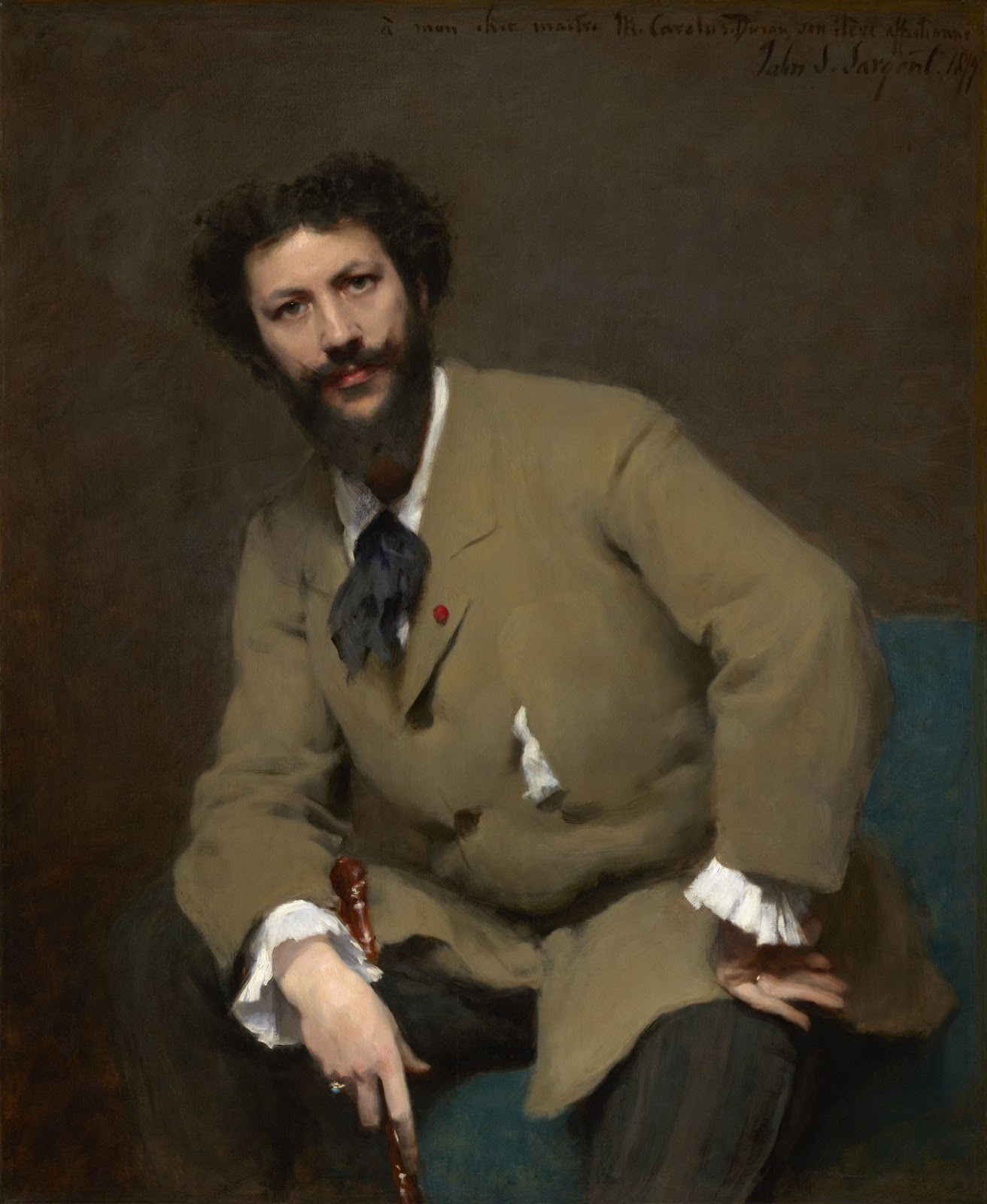
John Singer Sargent | Portrait of Carolus-Duran, 1879
Charles-Émile-Auguste Durand (1837-1917), known as Carolus-Duran, was a celebrated figure in the world of Parisian art and theater. Known for his elegant society portraits, he was also highly influential as a teacher.
Sargent entered Duran’s studio in 1874 and became his star pupil. Duran’s approach was radical: he encouraged his students to draw and paint simultaneously, using a loaded brush. In this stylish portrait, which received an award when it was shown at the Paris Salon in 1879, Sargent pays homage to his teacher by embracing his fluid technique. The affectionate dedication to Duran, inscribed in French at the upper right, announces Sargent’s artistic pedigree but also caused some contemporary viewers to remark that the student had surpassed the master. | © The Metropolitan Museum of Art

Ellen de Groot, 1959 | Realistic Figurative /Portrait painter
Ellen de Groot, born 1959 in Groningen (Netherlands) lives in Amsterdam. She loves walking and hiking, she walked in 2003 a part of the Way of St-James from the French/Spanish border to Santiago de Compostella. This was such unique experience that in May and June of this year (2005), she walked another part of the same route, from Le Puy en Velay to the Spanish border.

Eugenio Lucas Velázquez | Romantic painter
Eugenio Lucas Velázquez (1817-1870) is, without a doubt, one of the greatest masters of 19th-century Spanish painting and is deservedly hailed as the Spanish Romantic artist who best understood the art of Goya. He became the most important and enthusiastic follower of Goya’s universe following the death of the Aragonese genius, whose essence he succeeded in assimilating to the point that it is sometimes difficult to attribute correctly works that have not been studied in great depth.
Until a few decades ago, the figure of Eugenio Lucas was steeped in ignorance and legend, and for many years this led to serious confusion about his life, his artistic personality and even his name.

Victoria Novak | Figurative /Still life ainter
Realist painter Victoria Novak began her artistic career as an interior designer in her native Russia. For many years she enjoyed a successful career in her home city.
A move to Italy, where her love of Italian Renaissance art was fostered, inspired Victoria to devote herself to painting. She began to experiment with Old Master painting techniques, but applying them within a more contemporary context.
Of adopting the time honored techniques, Victoria says "At first it was more out of curiosity, but in the end I discovered a method that helps me to realize my ideas in the most satisfied way".

Nancy Depew, 1955 | Realist painter
Known for her highly realized figurative paintings and drawings which combine traditional painting techniques with more contemporary approaches, Nancy Depew has been awarded painting fellowships from the Ludwig Vogelstein Foundation in 1986 and from the New Jersey State Council on the Arts in 1987 and again in 2004.
Nancy Depew has been devoted to representational painting and drawing since early childhood, but began her formal education in painting at Lycoming College in Williamsport, PA and received a Bachelor of Arts degree in 1977.
Her desire to pursue the figurative work she had begun, led her to graduate studies at the University of Albany, The State University of New York and in 1985, she received a Master of Fine Arts in Painting.
Her desire to pursue the figurative work she had begun, led her to graduate studies at the University of Albany, The State University of New York and in 1985, she received a Master of Fine Arts in Painting.

Zorina Baldescu, 1954 | Fantasy painter /Illustrator
Born in Bucharest, Zorina Baldescu has been working as a children’s books illustrator for a number of years now.
She specializes in creating delightful fairy tale images featuring mermaids, princesses, fairies, unicorns and more.
Zorina’s images have been licensed for jigsaw puzzles and stationery products worldwide. Her images are perfect for any young girls range.

Daniel González Poblete, 1944 | Figurative Realist painter
Daniel Gonzalez Poblete was born in Corral de Calatrava, Ciudad Real.
Fifteen years later, in 1959, he enters fully into the world of the painting as a copyist in the Museo del Prado in Madrid, where is forged as a painter of artists as relevant as Vázquez Díaz.
He studied at the school of Arts and crafts, where he obtained the extraordinary drawing prize. Logical is that you so that from the first moment Poblete has been as a teacher of drawing and also as an absolute Dominator of the color. Within the figuration is one of the artists, without doubt, most important in the present time.

Vania Comoretti, 1975 | Hyperrealist Portrait painter
Vania Comoretti was born in Udine (Italy) in 1975.
She works and lives in Udine and Venice.
After achieving a five-year schooling certificate in Applied Arts, she attended several courses in advertising graphics and in 2004 graduated in Restoration, Painting section, at the Venice School of Fine Arts (Italy).
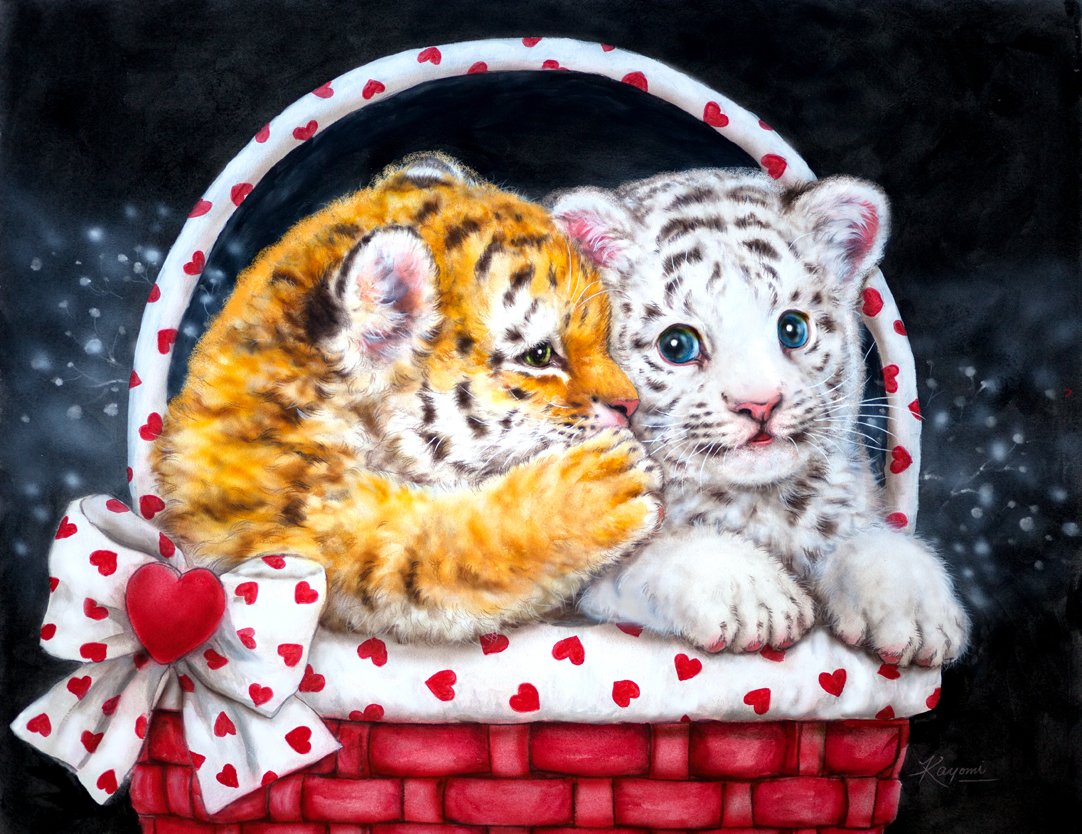
Kayomi Harai | Fantasy painter
Award-winning watercolor artist Kayomi Harai has captivated collectors for years with her darling images of wide-eyed cats in precarious predicaments.
Born in Osaka, Japan, Kayomi is a self-taught artist with a unique vision. Kayomi Harai was born in Osaka, Japan and began drawing at an early age. Since early childhood, she has had a deep interest in animals, especially the big wild cats and domestic cats. As painting gave her great joy, she decided to pursue her career as an artist. Kayomi Harai worked as a commercial art illustrator and a free-lance animal portrait artist in Japan before she moved to California in 1991.

Daniel Coves, 1985 | Abstract Figurative painter
Daniel Gonzalez Coves is a Spanish artist, born in 1985. Last year he had a piece included in the BP Portrait award show in London. His compositions are simple and elegant and his use of a single light source, often dim and directly overhead add an atmosphere of melancholy to what are otherwise very formal images. His brushwork as well is economical, realistic without being needlessly fussy, showily bravura, or painstakingly meticulous. Everything here is direct, realistic and formal. They are traditional but with a modern, almost minimalist aesthetic. He earned a fine arts degree and a masters in artístic production from the Real Academia de Bellas Artes de San Carlos, Valencia. Spain.

Aert de Gelder | Rembrandt’s pupil
Aert de Gelder, Aert also spelled Arent (1645-1727-), the only Dutch artist of the late 17th and early 18th century to paint in the tradition of Rembrandt’s late style.
De Gelder spent his life in Dordrecht, except for a period of time about 1661 when he was Rembrandt’s pupil in Amsterdam.
His biblical paintings-e.g., Scenes from the Passion (c. 1715)-feature warm colour and atmospheric light.
In his portraits-e.g., The Family of Herman Boerhave (c. 1722)-his bold, broad manner of brushwork and surface texture contrasts markedly with the refined techniques and smoothly finished canvases of his contemporaries. | © Encyclopædia Britannica, Inc.

Francisco de Goya | La maja, 1820-1823
An unidentified lady wearing delicate transparent clothing and a yellow jacket with black decorations lies on a green velvet divan with cushions and a spread.
There has been a great variety of opinions as to who the sitter is, but her anonymity is maintained in all of the inventories listing this work.
There has been a great variety of opinions as to who the sitter is, but her anonymity is maintained in all of the inventories listing this work.
Legend would have it that she was the Duchess of Alba, although she has also been identified as Pepita Tudó, Godoy´s mistress from 1797 on.
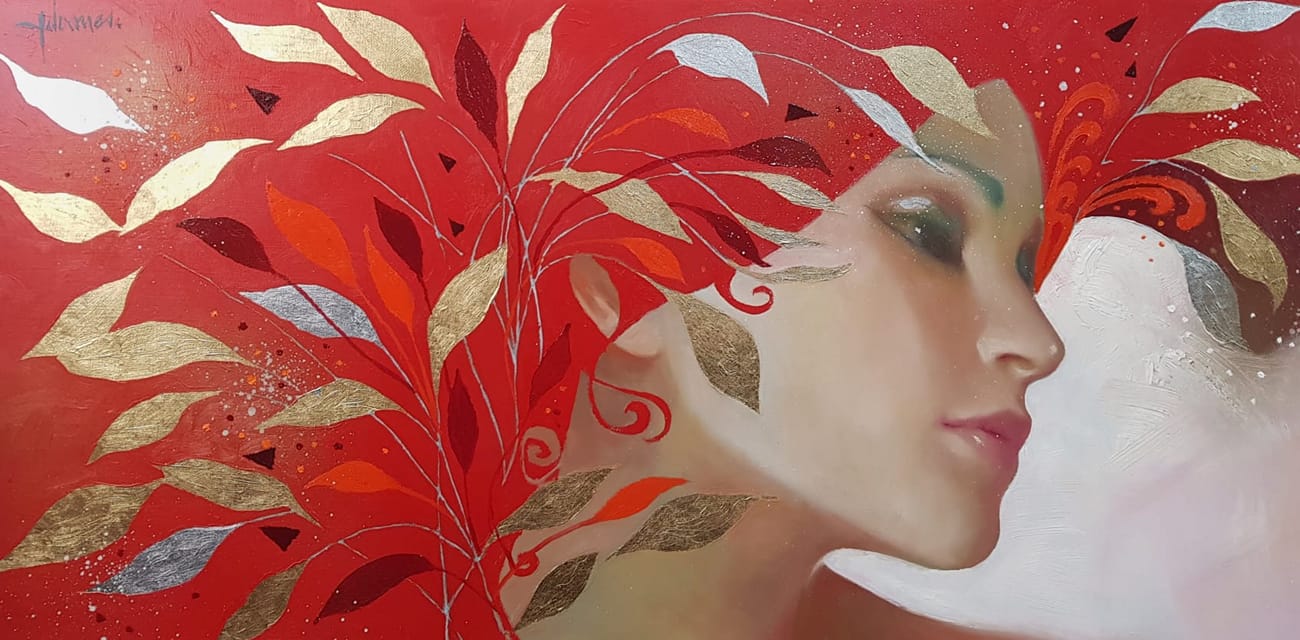
Felix Mas, 1935 | Figurative painter
Born in Barcelona, he trained at both the Artes y Oficios and the Escuela Superior de San Jorge, then furthered his artistic education with extensive travels throughout Europe and the United States, eventually returning to his native Barcelona to work. For Mas, painting implies color, emotion and impression.
His works, he says, are “infinite”. His elegantly dressed female figures, whether gazing into the distance or drifting into a daydream, captivate us with their graceful radiance and evocatively strong emotions.
Mas finds inspiration in women amidst the opulent settings of the Asian world, especially Japan and India with their beautiful costumes and landscape, Egypt, ripe with its enigmatic symbols, and ancient Greece and Rome, saturated with their unique elegance and sensuality.

ManoMatic, 1982 | Street Art
Adrián Pérez Vázquez best known as ManoMatic is a Spanish graffiti artist based in Huelva, Spain. Man-O-Matic born in Palos de la Frontera, a cozy Andalusian town on the southwestern coast of Spain.
He started painting at the age of 16, but chose a career in the field of communications due to family pressure – more often than not, the parents prefer their children to have a serious day job.
It begins in the world of graffiti in 2000 developed a style of drawing free illustrated characters of his invention. This artist has changed the perception of people with his hyperrealistic drawings.
At school, he learnt the art of image, sound and graphic design, then worked as a technician for a local TV station. The studies and work couldn’t keep him there, he decided to go back to where his heart belongs.
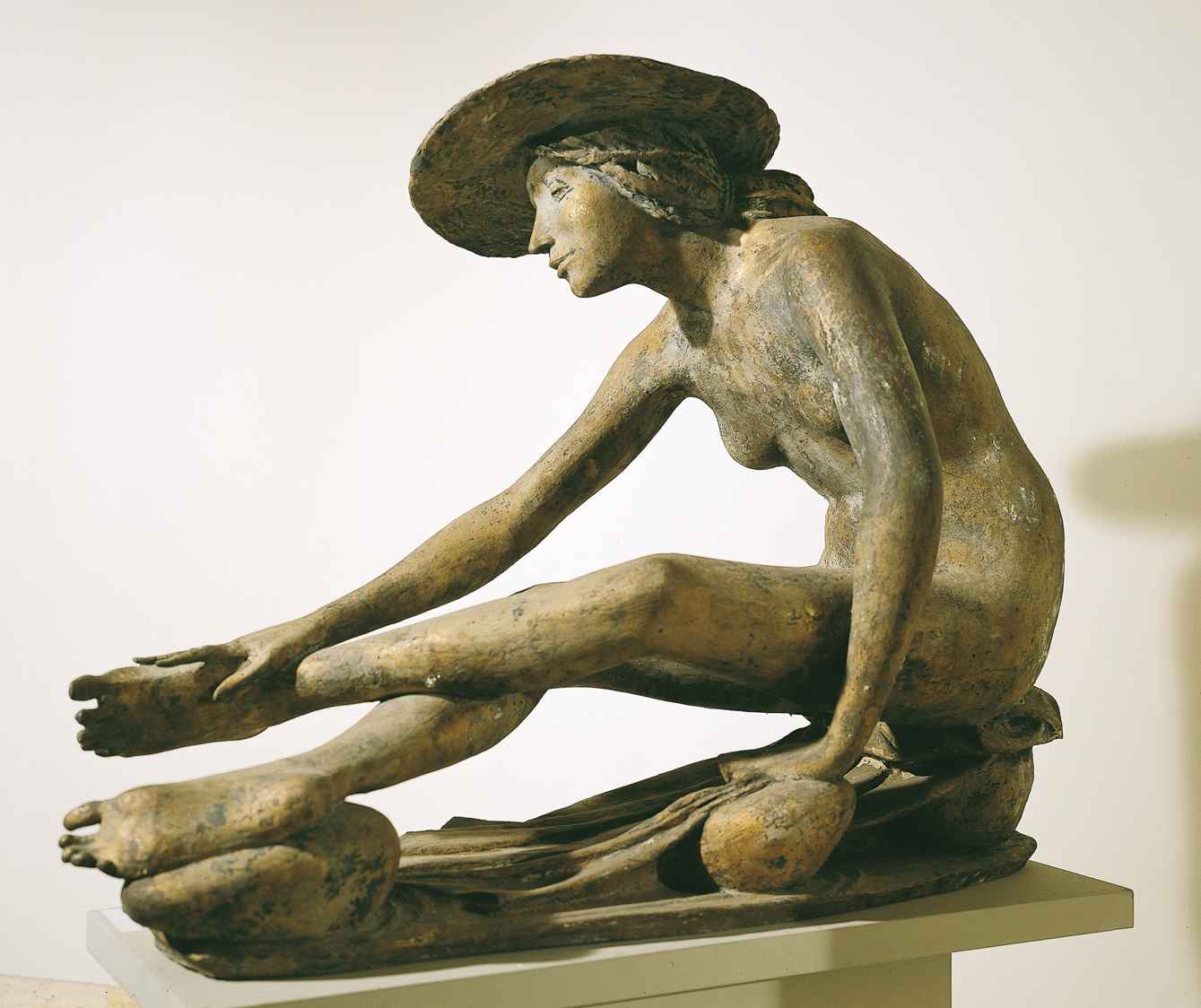
Venanzo Crocetti | Figurative sculptor
Venanzo Crocetti (1913-2003) was an Italian sculptor. He was born in Giulianova, Abruzzo.
In 1938 Venanzo Crocetti received the Grand Prize in the 19th Venice Biennale. "The Door of the Sacraments" of the St. Peter's Basilica Crocetti finished in 1966.
In 1972 he was nominated as president of the Accademia di San Luca.
Crocetti received the Golden Decoration from the Italian Ministry of Education for his achievement in fine art and culture. Venanzo Crocetti Museum is a foundation in Rome dedicated to the work of the artist.
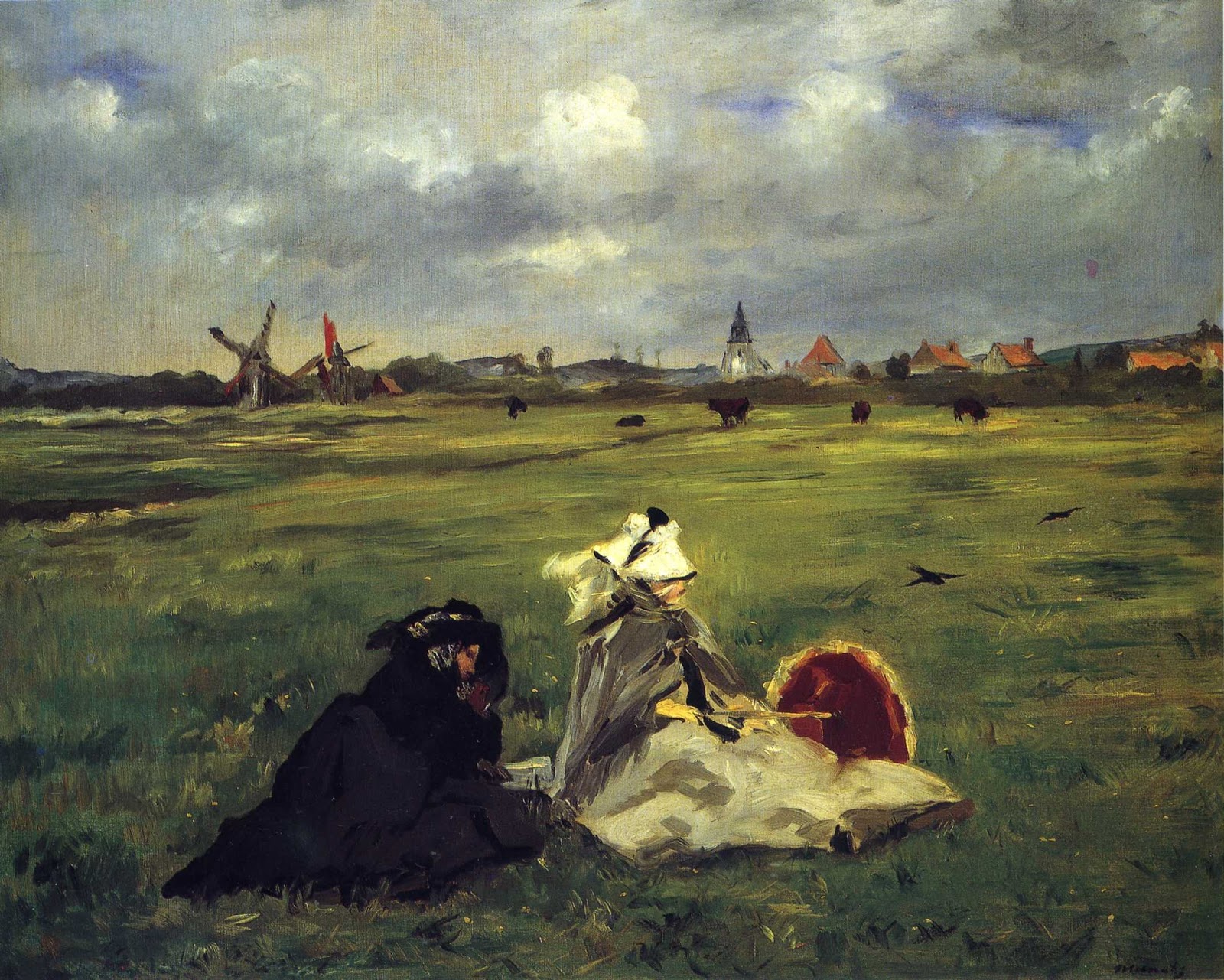
Édouard Manet | Swallows, 1873
'Swallows' was created in 1873 by French modernist painter Édouard Manet (1832-1883).
The artist’s mother in black and Madame Manet in white have taken their ease on a field behind the dunes, with their billowing skirts and bonnets tied on with veils.
The sun has just been shining, but now the sky is overcast; the artist’s wife has lowered the still opened parasol to her lap, and low flying swallows herald the change in weather.
All this has nothing anecdotal about it, but is merely the expression of the mood of the landscape, which is accentuated on the far horizon in the shape of windmills, the small church and rooftops of the village.
Iscriviti a:
Post (Atom)
















